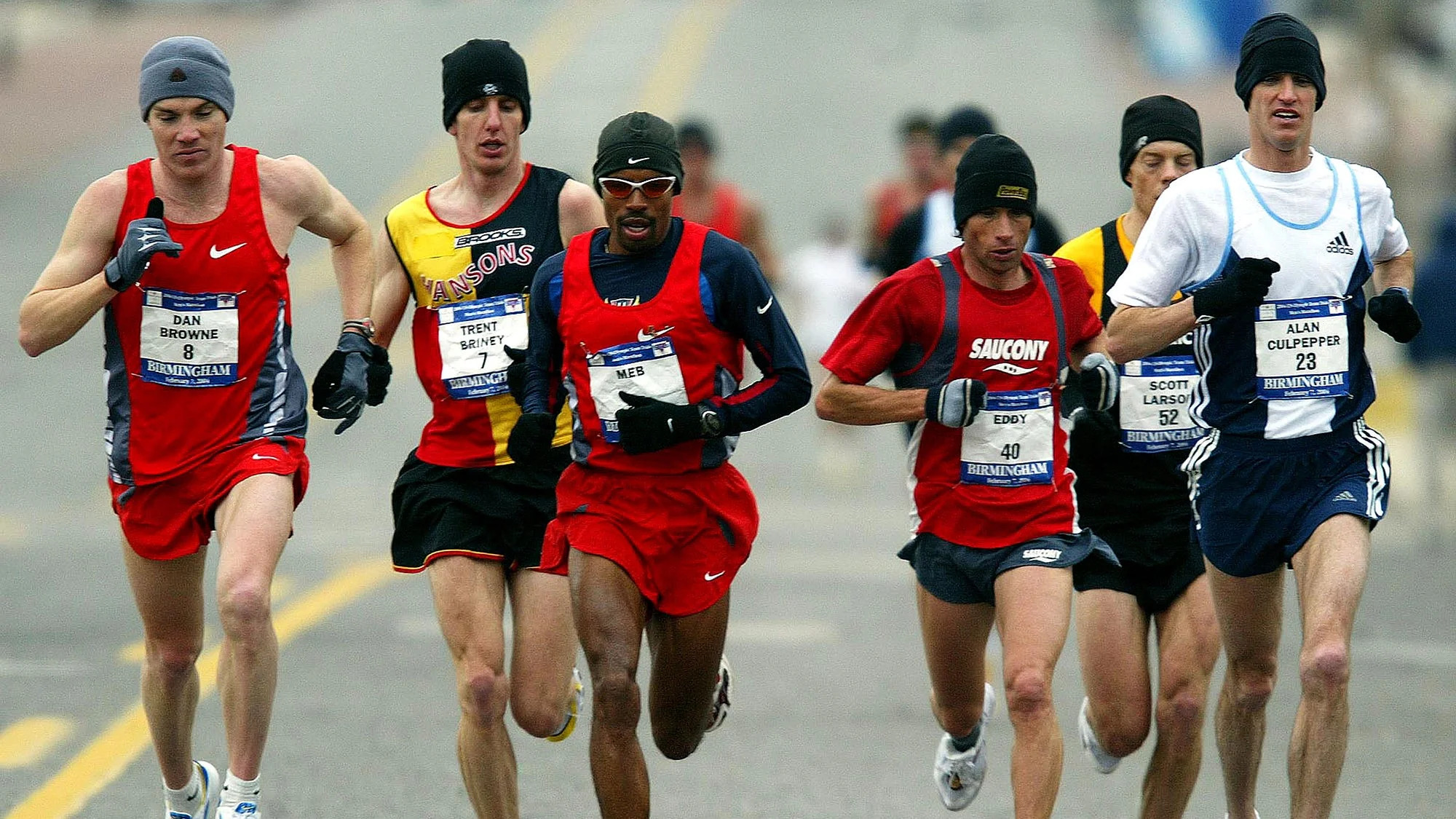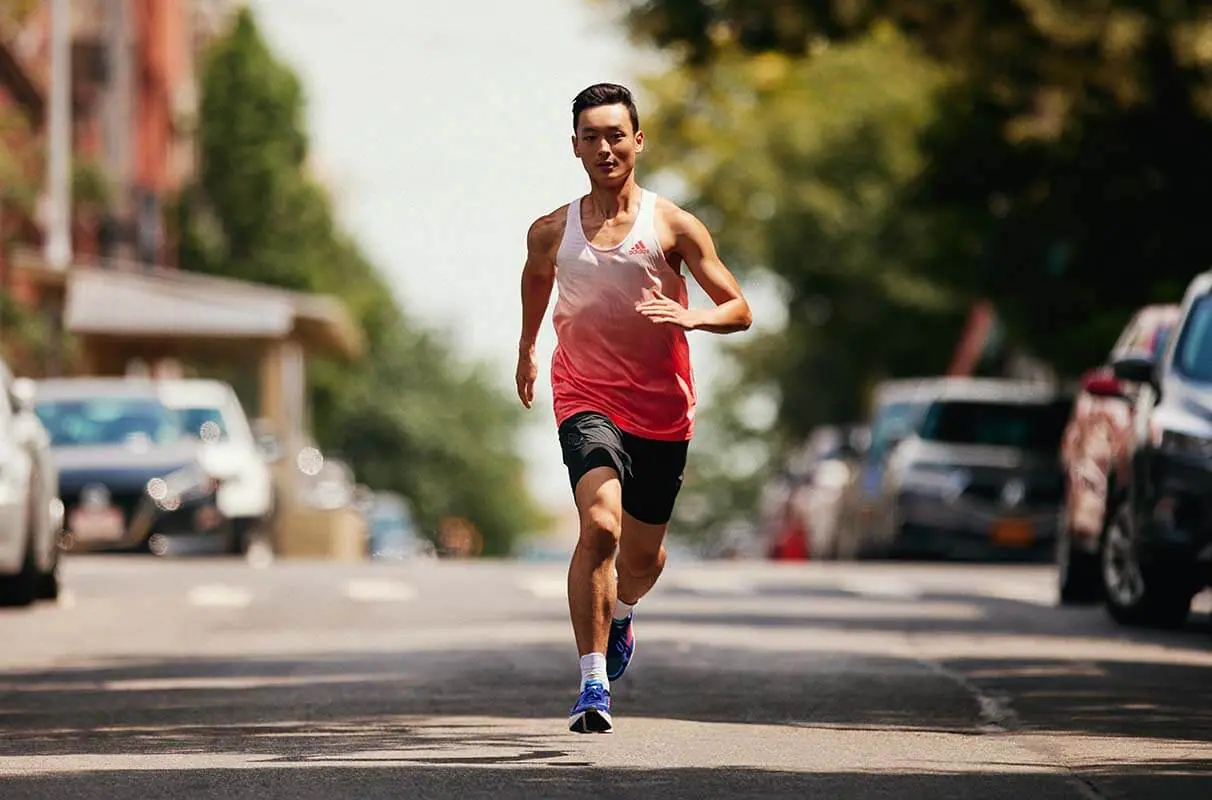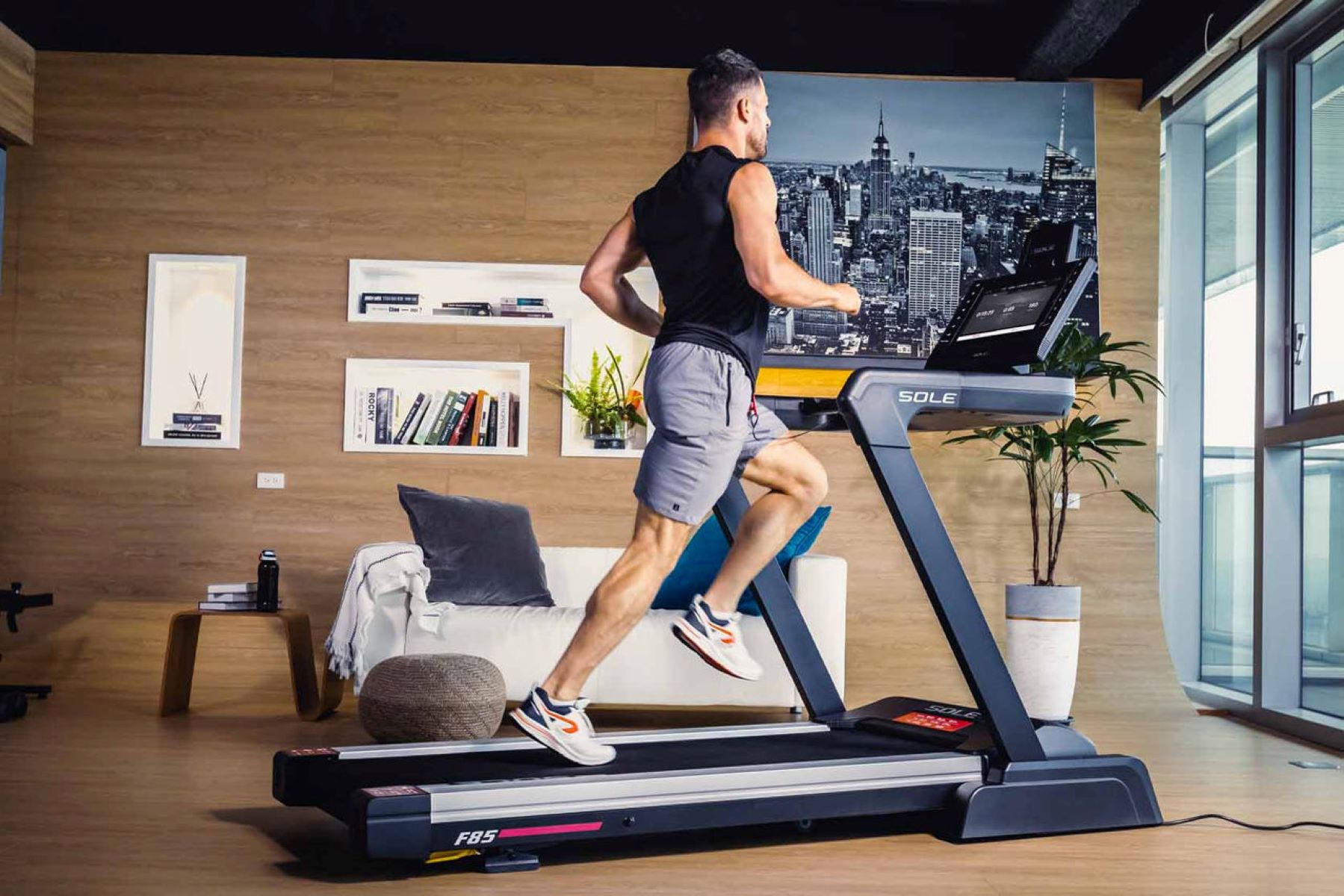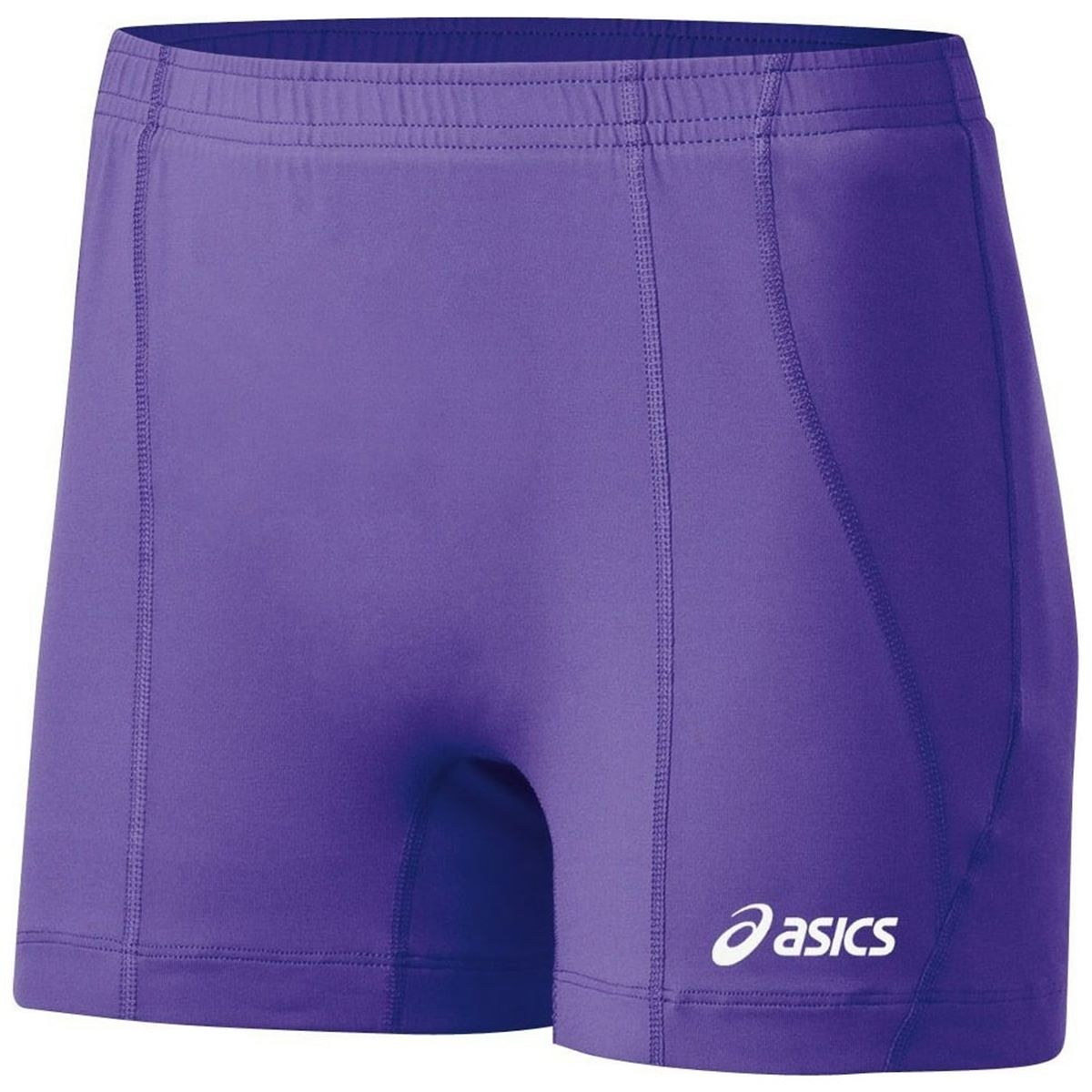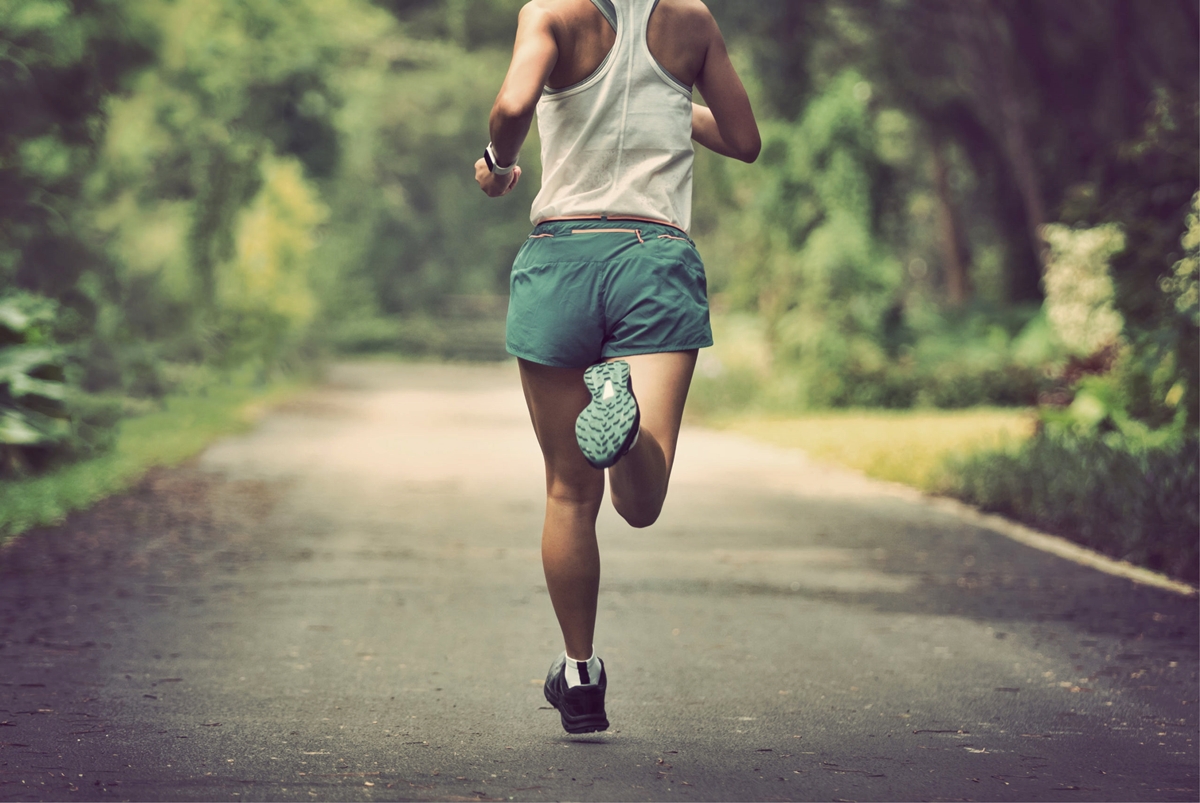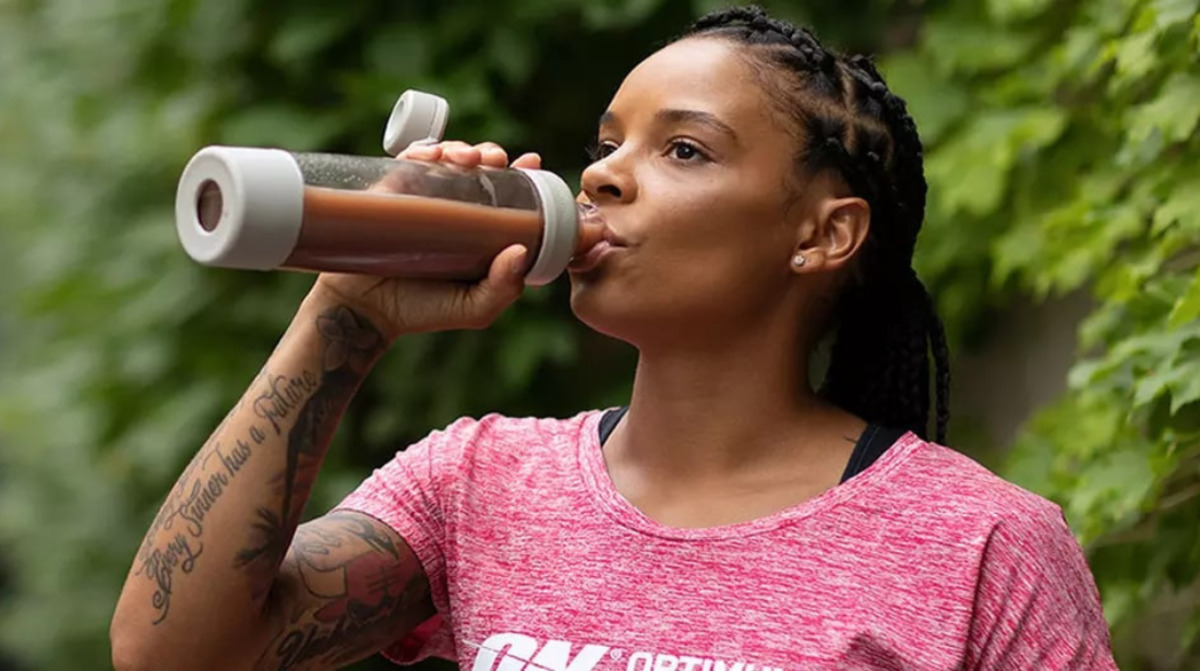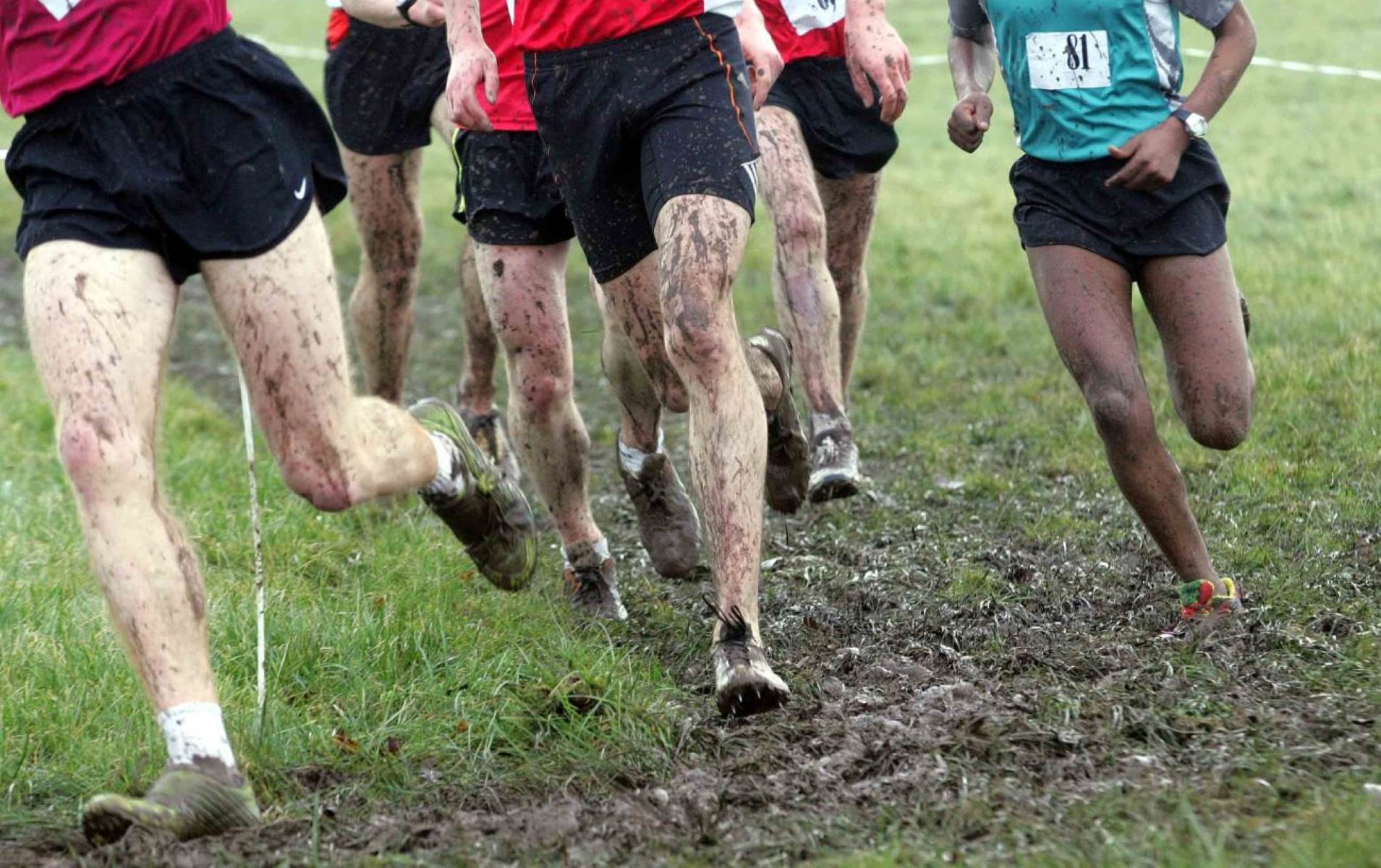Home>Misc>Featured>What Muscles Does Long Distance Running Work
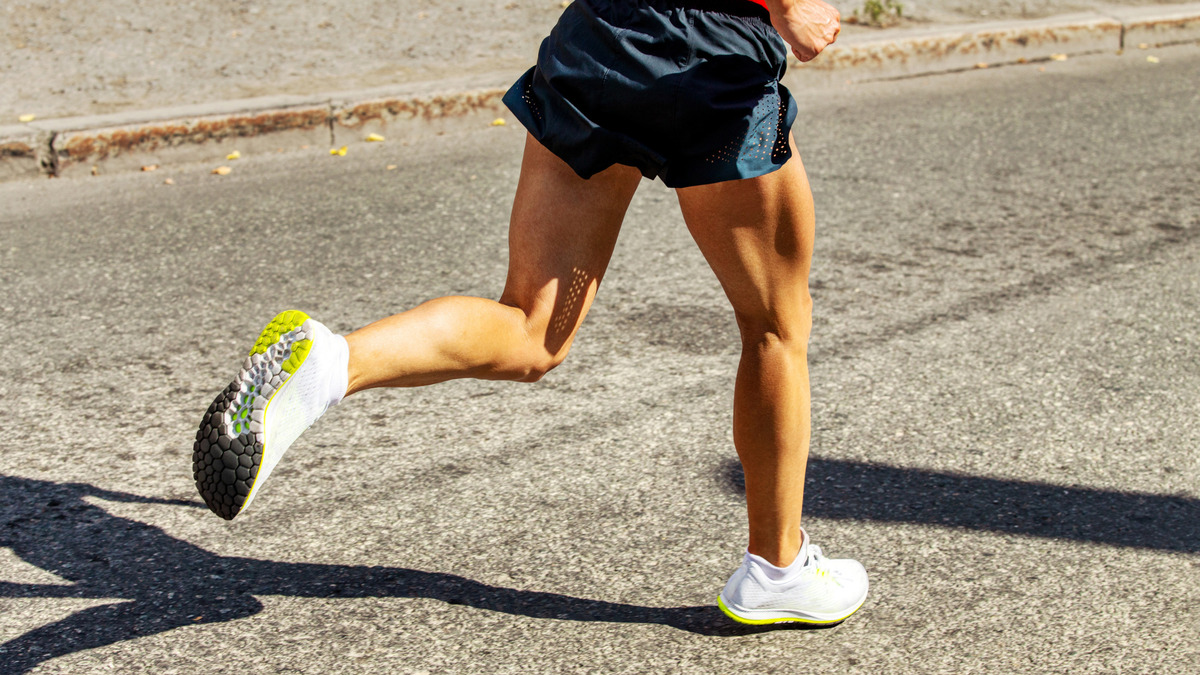

Featured
What Muscles Does Long Distance Running Work
Modified: August 21, 2023
Improve endurance and build strong leg muscles with long distance running. Get featured exercises and tips for a balanced full-body workout.
Introduction
Long distance running is a popular form of cardiovascular exercise that challenges both the mind and body. Whether you’re a seasoned marathon runner or just starting out with a Couch to 5K program, it’s important to understand the muscles that are engaged and strengthened during this endurance activity. By targeting these specific muscles, you can optimize your training, improve your performance, and reduce the risk of injury.
Long distance running typically refers to any running event over the distance of 5 kilometers (3.1 miles) or longer. It requires a significant amount of aerobic endurance, as well as the ability to maintain a steady pace for an extended period of time. Unlike sprinting or shorter distance running, long distance running focuses more on stamina and consistency rather than explosive power.
So, what muscles are actually being worked during long distance running? While it may seem like running primarily targets the legs, there are actually several muscle groups that play a crucial role in this activity. In addition to the lower body, the core muscles and upper body also contribute to proper form, stability, and overall efficiency.
In this article, we will delve into the primary muscles engaged during long distance running, discuss their specific functions, and provide tips for strengthening these muscles to improve your running performance.
Definition of long distance running
Long distance running is a form of aerobic exercise that involves covering a significant distance on foot. It typically refers to running events that are longer than 5 kilometers (3.1 miles), such as half marathons, marathons, ultramarathons, and other endurance races.
Long distance running is not only a physical activity, but also a mental and emotional challenge. It requires participants to push their limits, overcome fatigue, and maintain a steady pace for an extended period of time. It tests both their physical endurance and mental resilience.
There are various training methods and programs designed specifically for long distance running. These focus on gradually increasing mileage, building aerobic fitness, improving running technique, and developing mental toughness. Training for long distance running involves a combination of long runs, speed work, strength training, and recovery periods.
In addition to organized races, many individuals also engage in long distance running as a way to stay fit and enjoy the outdoors. It provides an opportunity to explore new places, challenge oneself, and meet fellow runners who share a passion for the sport.
Long distance running is not limited to professional athletes or experienced runners. Anyone can participate in long distance running, regardless of age, fitness level, or previous running experience. It is a versatile activity that can be tailored to individual goals and abilities. Whether you’re aiming to complete your first marathon or simply improve your overall fitness, long distance running offers a multitude of benefits for both physical and mental well-being.
Overall, long distance running is a demanding yet rewarding activity that requires commitment, perseverance, and determination. It is not only a way to improve cardiovascular fitness and build muscular endurance, but also a means to challenge oneself, set goals, and experience the incredible sense of accomplishment that comes with crossing the finish line.
The primary muscles used in long distance running
Long distance running is a full-body exercise that engages multiple muscle groups. While the main focus is often on the lower body, several other muscles play a vital role in maintaining proper form, stability, and overall efficiency. Understanding these primary muscles can help you develop a comprehensive training program to optimize your running performance.
1. Leg Muscles: The muscles of the legs are the powerhouses for long distance running. The quadriceps at the front of the thighs are responsible for extending the knee and provide the power for pushing off the ground. The hamstrings at the back of the thighs help with knee flexion and hip extension. The calves, including the gastrocnemius and soleus muscles, provide the force needed for toe-off and aid in absorbing the shock of landing.
2. Core Muscles: The core muscles play a crucial role in maintaining stability and efficient running form. These muscles include the abdominals, obliques, and lower back muscles. They help to stabilize the spine, pelvis, and hips, providing a solid foundation for the legs to generate power and maintaining an upright posture during long runs.
3. Gluteal Muscles: The gluteal muscles, including the gluteus maximus, medius, and minimus, are essential for hip extension and stabilization. They work in conjunction with the hamstrings and lower back muscles to provide power and control during the propulsion phase of running. Strong glutes contribute to better running efficiency and overall speed.
4. Hip Flexors: The hip flexor muscles, including the iliopsoas and rectus femoris, are responsible for flexing the hips and lifting the knees during the running stride. They are highly active during the swing phase of the gait cycle and play a critical role in maintaining stride length and cadence.
5. Upper Body Muscles: Although the primary focus of long distance running is on the lower body, the muscles of the upper body also contribute to overall running performance. The arms and shoulders help with balance, arm swing, and momentum. Building strength and endurance in the upper body can improve running efficiency and aid in maintaining proper running form.
While these are the primary muscles used in long distance running, it’s important to note that running also engages secondary muscles such as the calves, shins, quadratus lumborum, and trapezius muscles. Strengthening and conditioning these muscles along with the primary ones can help prevent imbalances and reduce the risk of injury.
Understanding the role that each muscle group plays in long distance running can guide you in designing a well-rounded strength and conditioning program. By targeting and strengthening these specific muscles, you can enhance your running performance, improve endurance, and minimize the risk of fatigue or injury.
The role of the legs in long distance running
The legs play a central role in long distance running, as they are responsible for generating power, propelling the body forward, and absorbing the impact of each stride. Understanding the specific functions of the leg muscles can help you optimize your training and improve your overall performance.
1. Quadriceps: The quadriceps, located at the front of the thighs, are crucial for extending the knee during the push-off phase of running. Strong quadriceps provide the force needed to propel the body forward and maintain a steady pace. They work in coordination with the hamstrings to produce a fluid and efficient running stride.
2. Hamstrings: The hamstrings, situated at the back of the thighs, play a significant role in knee flexion and hip extension during running. They work in conjunction with the gluteal muscles to generate power and control during the propulsion phase of each stride. Strong hamstrings help to improve stride length, reduce the risk of muscle imbalances, and enhance overall running efficiency.
3. Calf Muscles: The calves, including the gastrocnemius and soleus muscles, are essential for providing the force needed for toe-off, which propels the body forward. Strong calves also help to absorb the shock of each footstrike, reducing the risk of stress-related injuries such as shin splints. Additionally, the calf muscles assist in maintaining balance and stability during the running stride.
4. Hip Muscles: The hip muscles, including the glutes, hip flexors, and adductors, are key players in long distance running. The gluteal muscles, particularly the gluteus maximus, play a vital role in hip extension, providing power and stability during each stride. The hip flexors, such as the iliopsoas and rectus femoris, assist in lifting the knees and maintaining proper running form. The adductors help to stabilize the hips and maintain a consistent stride pattern.
5. Shin Muscles: The muscles of the shins, specifically the tibialis anterior, are important for controlling foot movement and preventing excessive pronation or supination. Strengthening the shin muscles can help reduce the risk of shin splints and improve overall lower leg stability during long distance running.
It is essential to incorporate specific exercises that target these leg muscles into your training routine to build strength, endurance, and prevent imbalances. Squats, lunges, leg presses, calf raises, and hamstring curls are just a few examples of exercises that can help strengthen these muscles. Additionally, incorporating activities such as uphill running, speed intervals, and hill sprints can further challenge the leg muscles and improve running performance.
By understanding the role of the leg muscles in long distance running and incorporating targeted strength exercises, you can improve your running efficiency, reduce the risk of injuries, and reach your performance goals.
The importance of the core muscles in long distance running
The core muscles play a crucial role in long distance running, providing stability, balance, and power to the entire body. While the legs may do the majority of the work, a strong core is essential for maintaining proper form, preventing injuries, and optimizing running efficiency.
The core muscles include the abdominals, obliques, lower back muscles, and even the hip muscles. Here’s why they are so important for long distance runners:
1. Stability and balance: The core muscles help stabilize the spine and pelvis, keeping the torso upright and balanced during running. This stability not only improves your running form but also prevents excessive twisting or rotation, reducing the risk of injury. A strong core allows you to maintain a straight posture, preventing slouching or leaning forward, which can lead to inefficient movement patterns.
2. Transfer of power: The core muscles act as a bridge, transferring power generated from the lower body to the upper body and vice versa. This transfer of force helps in maintaining a fluid running motion and efficiently propelling the body forward with each stride. A strong core allows for better coordination between the upper and lower body, increasing running efficiency.
3. Endurance and fatigue resistance: The core muscles provide stability and support throughout the entire duration of a long distance run. They help to maintain proper posture and prevent muscle imbalances that can lead to excessive fatigue. By strengthening your core, you can improve your endurance and reduce the risk of muscle fatigue or cramping during long runs.
4. Injury prevention: A weak core can lead to various running-related injuries, such as lower back pain, hip pain, or even stress fractures. By strengthening the core muscles, you can reduce the load on these vulnerable areas, providing support and preventing overuse injuries. Additionally, a strong core improves pelvic control and stability, reducing the risk of non-contact injuries, such as sprained ankles.
Some effective exercises to strengthen the core include planks, Russian twists, bridges, and leg raises. It’s important to incorporate these exercises into your training routine at least 2-3 times a week to build strength and endurance in your core muscles.
Incorporating exercises that specifically target the core muscles can help improve your running performance, enhance your stability and balance, and reduce the risk of injury. By investing time and effort into strengthening your core, you can become a more efficient and resilient long distance runner.
The contribution of the upper body muscles in long distance running
Although long distance running predominantly focuses on the lower body, the contribution of the upper body muscles should not be overlooked. The arms, shoulders, and upper back play important roles in maintaining balance, stability, and overall running efficiency. Understanding the impact of the upper body muscles in long distance running can help you optimize your training and improve your performance.
1. Arm swing: The muscles of the arms, particularly the biceps, triceps, and deltoids, are involved in the swinging motion of the arms while running. A controlled and efficient arm swing helps to counterbalance the lower body movements, aiding in maintaining an upright posture and proper running form. It also helps to generate momentum and propel the body forward with each stride.
2. Shoulder stability: The muscles of the upper back, including the trapezius, rhomboids, and rear deltoids, play a crucial role in maintaining shoulder stability during running. They help to keep the shoulder blades retracted and prevent excessive movement or rounding of the shoulders. This stability allows for better arm movement and reduces the risk of shoulder and neck strain.
3. Chest muscles: The chest muscles, such as the pectoralis major and minor, contribute to proper arm movement and breathing during long distance running. They assist in the forward swing of the arms and aid in expanding the chest cavity for efficient breathing. Strong and flexible chest muscles can improve stride length and increase lung capacity, enhancing overall running performance.
4. Core integration: The muscles of the upper body work in coordination with the core muscles to maintain stability and transfer energy from the lower body. A strong and engaged core provides a solid foundation for the arms and upper body, allowing them to work in sync with the legs. This integration helps to improve running efficiency and prevent wasted energy.
While the upper body muscles may not play as significant a role as the lower body muscles in long distance running, neglecting them can lead to decreased running efficiency, increased fatigue, and potential imbalances. Incorporating exercises that target the upper body, such as arm swings, push-ups, rows, and shoulder presses, can help strengthen these muscles and improve overall running performance.
In addition to targeted exercises, maintaining good posture, relaxing the shoulders, and allowing for a natural arm swing can also contribute to efficient upper body movement while running. Remember to keep your arms relaxed, elbows bent at a 90-degree angle, and swing them naturally back and forth, without excessive crossing in front of your body.
By recognizing the important role of the upper body muscles and incorporating exercises and proper form, you can enhance your running performance, maintain better balance, and reduce the risk of imbalances or injuries.
Common muscle imbalances in long distance runners
Long distance running can lead to certain muscle imbalances due to the repetitive motion and demands placed on specific muscle groups. These imbalances can affect running form, performance, and potentially increase the risk of overuse injuries. Understanding these common muscle imbalances in long distance runners is important for injury prevention and maintaining optimal training.
1. Quadriceps dominance: The repetitive nature of running can lead to an overemphasis on the quadriceps muscles, which are responsible for extending the knee. This imbalance can result in the underutilization of the hamstrings and gluteal muscles. It is important to ensure proper strength and balance between the quadriceps and the posterior chain muscles to maintain proper form and reduce the risk of injury.
2. Weak hip abductors: The hip abductor muscles, such as the gluteus medius and minimus, play a crucial role in stabilizing the pelvis and maintaining proper alignment during the running stride. Weak hip abductors can lead to improper hip and knee alignment, causing IT band syndrome and knee pain. Strengthening these muscles through exercises like lateral leg raises and clamshells can help prevent imbalances and promote stability.
3. Weak core muscles: A weak core can lead to posture-related imbalances, such as excessive forward lean or excessive side-to-side movement. This can affect both running form and efficiency. Strengthening the core muscles, including the abdominals, obliques, and lower back, can provide stability and proper alignment, reducing the risk of injuries and improving overall running performance.
4. Tight hip flexors: Long distance running involves repetitive hip flexion, which can lead to tightness and imbalances in the hip flexor muscles, such as the iliopsoas and rectus femoris. Tight hip flexors can negatively impact stride length, disrupt pelvic alignment, and contribute to lower back pain. Regular stretching and foam rolling of the hip flexors can help alleviate tightness and maintain flexibility.
5. Overactive calves and underactive shins: The calf muscles, including the gastrocnemius and soleus, can become overdeveloped and tight in long distance runners, while the muscles in the shins, such as the tibialis anterior, can become underdeveloped and weak. This imbalance can lead to issues like shin splints and reduce ankle stability. Incorporating exercises that strengthen the shins, such as toe taps or heel walks, along with proper stretching and foam rolling of the calves, can help maintain a balance in lower leg muscles.
It is important for long distance runners to address these muscle imbalances through targeted strength and flexibility exercises. Incorporating exercises that target the underused muscle groups, along with stretching and foam rolling to relieve tightness, can help prevent injuries and promote overall muscular balance.
In addition to specific exercises, it is recommended to include regular cross-training activities that engage different muscle groups and reduce the risk of overuse injuries. Incorporating strength training, yoga, Pilates, or cycling into your routine can provide a well-rounded approach to maintaining muscular balance and preventing imbalances that can hinder long distance running performance.
Tips for strengthening the muscles used in long distance running
Strengthening the muscles used in long distance running is essential for improving performance, preventing injuries, and maintaining optimal running form. Here are some tips to help you effectively strengthen the key muscle groups involved in long distance running:
1. Gradual progression: When incorporating strength training into your running routine, start with lighter weights or bodyweight exercises and gradually increase the intensity and load over time. This allows your muscles to adapt and reduce the risk of injury.
2. Focus on compound exercises: Compound exercises target multiple muscle groups simultaneously and mimic the movement patterns of running. Examples include squats, lunges, deadlifts, and step-ups. These exercises engage various muscles in the legs, glutes, and core, helping to build overall strength and balance.
3. Incorporate plyometric exercises: Plyometric exercises, such as box jumps and jump squats, help develop explosive power and improve running efficiency. These exercises engage the fast-twitch muscle fibers and enhance muscular strength and coordination.
4. Include core-specific exercises: Strengthening the core muscles is crucial for stability and maintaining proper running posture. Incorporate exercises like planks, Russian twists, and bicycle crunches to target the abdominals, obliques, and lower back muscles.
5. Don’t neglect upper body strength: While the focus of long distance running is on the lower body, having a strong upper body can improve overall running efficiency and balance. Include exercises like push-ups, shoulder presses, and rows to strengthen the arms, shoulders, and upper back muscles.
6. Balance between strength and flexibility: Maintain flexibility through regular stretching, foam rolling, and mobility exercises to prevent muscle imbalances. This ensures proper range of motion and reduces the risk of overuse injuries.
7. Rest and recovery: Allow your muscles time to recover and rebuild after strength training sessions. Adequate rest is essential for muscle growth and preventing fatigue or overtraining.
8. Listen to your body: Pay attention to any signs of discomfort or pain during exercise. If something feels off, modify the exercise or consult with a healthcare professional to prevent further injury.
9. Cross-training: Engage in activities other than running to strengthen different muscle groups and prevent overuse injuries. Activities such as cycling, swimming, yoga, or Pilates can provide a well-rounded approach to overall fitness and muscle development.
10. Proper nutrition: Fuel your body with a balanced diet that includes an adequate amount of protein, carbohydrates, and healthy fats. Providing your muscles with the necessary nutrients promotes muscle repair and growth.
Remember to consult with a fitness professional or coach to tailor a strength training program to your individual needs and goals. By incorporating these tips into your training routine, you can build the strength and endurance necessary to enhance your long distance running performance.
Conclusion
Long distance running engages a variety of muscles throughout the body, from the legs and core to the upper body muscles. Understanding the role of these muscles and addressing potential imbalances is crucial for optimizing performance and reducing the risk of injuries. By incorporating targeted strength training exercises, maintaining flexibility, and practicing proper form, you can strengthen the muscles used in long distance running and enhance your overall running experience.
Focus on gradually building strength, targeting both the primary and supporting muscle groups involved in running. Balancing quadriceps and hamstrings, strengthening the core, and ensuring proper hip stability are key areas to address. Additionally, do not neglect the upper body, as a strong upper body contributes to stability, balance, and overall running efficiency.
Remember to listen to your body and pay attention to any signs of muscle imbalances or discomfort. Be sure to incorporate rest and recovery into your training routine to allow your muscles to repair and rebuild. Cross-training activities can also help prevent overuse injuries and increase overall fitness.
Lastly, proper nutrition is essential for fueling your body and providing the necessary nutrients for muscle repair and growth. A balanced diet with adequate protein, carbohydrates, and healthy fats will support your long distance running goals.
Incorporating these tips into your training routine will not only enhance your running performance but also help you maintain proper form, prevent injuries, and reach your full potential as a long distance runner. So lace up your shoes, strengthen those muscles, and enjoy the journey as you explore the world of long distance running.
